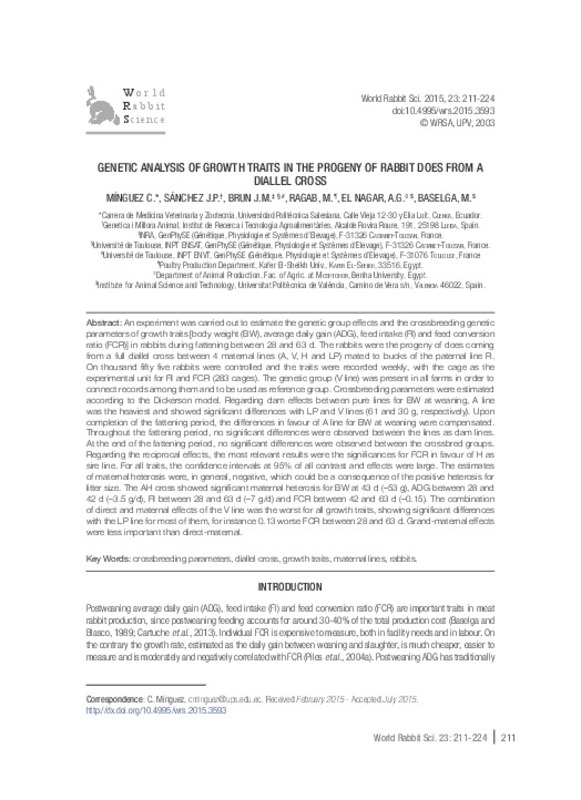JavaScript is disabled for your browser. Some features of this site may not work without it.
Buscar en RiuNet
Listar
Mi cuenta
Estadísticas
Ayuda RiuNet
Admin. UPV
Genetic analysis of growth traits in the progeny of rabbit does from a diallel cross
Mostrar el registro completo del ítem
Mínguez, C.; Sánchez, J.; Brun, J.; Ragab, M.; El Nagar, A.; Baselga, M. (2015). Genetic analysis of growth traits in the progeny of rabbit does from a diallel cross. World Rabbit Science. 23(4):211-224. https://doi.org/10.4995/wrs.2015.3593
Por favor, use este identificador para citar o enlazar este ítem: http://hdl.handle.net/10251/66431
Ficheros en el ítem
Metadatos del ítem
| Título: | Genetic analysis of growth traits in the progeny of rabbit does from a diallel cross | |
| Autor: | Mínguez, C. Sánchez, J.P. Brun, J.M. Ragab, M. El Nagar, A.G. Baselga, M. | |
| Fecha difusión: |
|
|
| Resumen: |
[EN] An experiment was carried out to estimate the genetic group effects and the crossbreeding genetic parameters of growth traits [body weight (BW), average daily gain (ADG), feed intake (FI) and feed conversion ratio ...[+]
|
|
| Palabras clave: |
|
|
| Derechos de uso: | Reserva de todos los derechos | |
| Fuente: |
|
|
| DOI: |
|
|
| Editorial: |
|
|
| Versión del editor: | https://doi.org/10.4995/wrs.2015.3593 | |
| Código del Proyecto: |
|
|
| Agradecimientos: |
This work was supported by the Spanish project AGL2011-30170- C02-01 from the Spanish National Research Plan. C. Minguez acknowledges a Formacion de Personal Investigador (FPI) grant from the Ministerio de Economia y ...[+]
|
|
| Tipo: |
|








